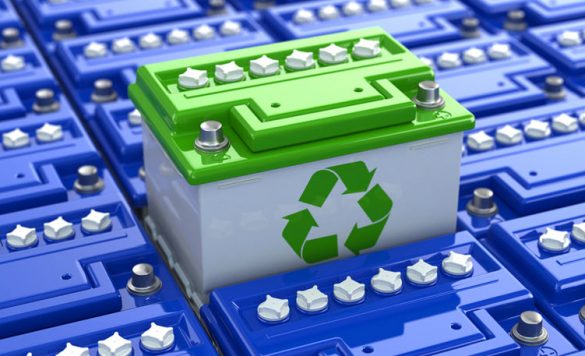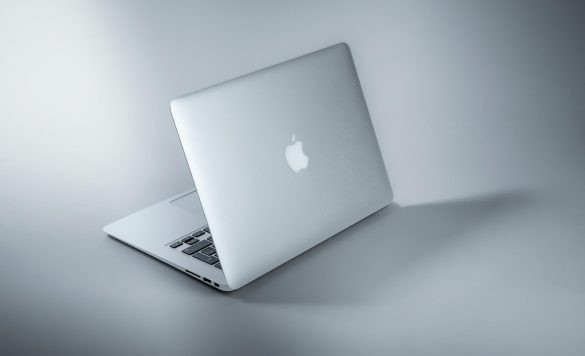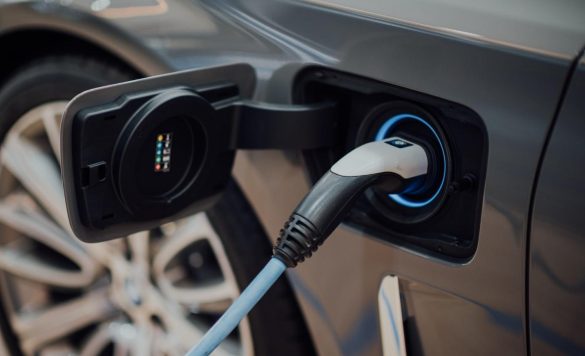Second-Hand Shopping for Electronics: What to Look For
Updated on: by Amy Kennedy

The world of electronics is constantly evolving, with new gadgets and devices hitting the market every day.
Need Easy Extra $350+/Month For Free?
- SwagBucks: Watch videos, take surveys, shop and more to earn real money. Earn up to $35 per survey! No hidden fees and completely free. Join Swagbucks Now to Get $5 Free
- InboxDollars: Has so far paid its members over $40 Million. Watch videos, take surveys, shop and more. Join InboxDollars Now and Get Free $5
- SurveyJunkie: Make $5-$25 in your spare time from home to take online surveys, participating in a Focus Groups and trying new products. Join SurveyJunkie Now
- Branded Surveys: Complete online surveys. Collect points. Redeem your points for cash & gift cards. No hidden fees and completely free! Has so far paid its members over $18 Million. Join Branded Surveys Now
As a result, many people are turning to second-hand shopping as a cost-effective and sustainable way to acquire the latest technology.
Whether you’re on the hunt for a budget-friendly smartphone, a powerful laptop, or a high-quality camera, second-hand electronics can offer great value.
But navigating the world of second-hand electronics shopping can be a daunting task, as there are many factors to consider to ensure you make a wise investment.
This guide explores what to look for when shopping for second-hand electronics, providing you with valuable tips and insights to make informed decisions.
Benefits of Buying Used Electronics
Buying used electronics offers several benefits, including the following:
1. Cost Savings
When it comes to buying used electronics, the primary allure for most consumers is undeniable: cost savings.
Second-hand gadgets and devices often come with price tags significantly lower than their brand-new counterparts.
This financial advantage can be particularly appealing for individuals or families looking to stick to a budget without sacrificing quality.
Whether you’re eyeing a refurbished smartphone, a pre-owned gaming console, or a gently used laptop, the lower cost can make a world of difference in your wallet.
Moreover, the money saved can be redirected towards other essential expenses or even used to explore additional tech upgrades.
2. Environmental Sustainability
The planet benefits when you choose to buy used electronics.
Opting for pre-owned gadgets contributes to environmental sustainability by reducing electronic waste.
Electronic waste, or e-waste, is a growing global concern, with discarded devices ending up in landfills and posing significant environmental hazards.
By extending the life of electronics through second-hand purchases, you play a crucial role in minimizing the environmental impact of the tech industry.
It’s a small but meaningful step towards a more eco-friendly approach to consumer electronics, helping conserve resources and reduce the carbon footprint associated with manufacturing new devices.
Need Easy Extra Cash?
Pinecone Research, a leading name in online survey panel honesty, absolutely guarantees $3 cash for every survey you complete!
Take advantage of their time limited New Membership drive and register NOW. Join today: 100% free!
Join Pinecone Research Now
3. Affordability of High-End Brands
High-end electronics often come with hefty price tags when purchased new.
However, when you choose to buy them used, the affordability factor takes center stage.
This means you can access premium brands and models that might otherwise be out of your budget.
Whether you covet a luxury smartphone with cutting-edge features, a top-of-the-line gaming laptop, or a professional-grade camera, the second-hand market provides an opportunity to own these coveted items without breaking the bank.
It’s a chance to enjoy the craftsmanship and performance of prestigious brands at a fraction of the original cost.
4. Less Depreciation
New electronics tend to depreciate rapidly in value, often losing a significant portion of their worth shortly after purchase.
In contrast, used electronics typically have lower depreciation rates.
This means your investment in a pre-owned device is more likely to hold its value longer.
While it may not appreciate in value, it won’t suffer the same steep decline as a brand-new gadget.
This aspect can be particularly advantageous if you plan to resell or upgrade your electronics in the future, as you may recoup a more substantial portion of your initial investment compared to buying new.
5. Reduced Financial Risk
Buying used electronics carries a lower financial risk compared to purchasing new ones.
When you buy a brand-new device, you’re making a substantial financial commitment, often accompanied by warranties and guarantees.
However, if you opt for a second-hand purchase, the initial cost is typically lower, reducing your exposure to financial risk.
This is especially beneficial if you’re uncertain about a particular device or brand and want to test it out before committing to a brand-new purchase.
It allows you to explore different options without a significant upfront financial burden.
6. Availability of Vintage or Rare Items
For tech enthusiasts and collectors, the second-hand market is a treasure trove of vintage and rare electronics.
It’s a place where you can uncover iconic gadgets from the past or discontinued items that hold sentimental value.
Whether you’re searching for a classic video game console, a vintage film camera, or a retro music player, the used market often has a surprising array of nostalgic gems.
Owning such items can evoke feelings of nostalgia and provide a unique sense of satisfaction that’s hard to replicate with brand-new technology.
7. Upgradability
Used electronics offer the flexibility of upgradability.
When you buy a pre-owned device, you’re not limited to its original specifications.
You can customize and upgrade various components to better match your current needs and preferences.
This means you can boost the performance of a used computer by adding more RAM or upgrading its storage capacity.
For gamers, upgrading graphics cards or processors in second-hand gaming rigs can provide a cost-effective way to enhance gaming experiences.
The ability to tailor a pre-owned device to your specific requirements offers a level of flexibility that’s often not as readily available with new electronics.
8. Established Performance
Used electronics come with the advantage of having their performance and reliability established.
Unlike new gadgets that may not have a long track record of user feedback and reviews, second-hand devices often have a wealth of information available.
You can read user experiences, expert reviews, and reliability assessments to gauge how well a particular device has performed over time.
This established performance history can help you make more informed decisions, ensuring that the used electronics you choose meet your expectations and requirements.
Earn Everything… nearly!
Join Opinion Outpost, one of the few faithful and honest survey panels and earn cash and gift cards for your opinion. Stack your points and redeem them: Simple! No hidden fees and completely free!
Join Opinion Outpost Now
9. Reduced Packaging Waste
The environmental benefits of buying used electronics extend beyond reducing e-waste.
Choosing pre-owned devices also contributes to the reduction of packaging waste.
When you buy new electronics, they typically come with elaborate packaging, including boxes, plastic wraps, and various inserts.
In contrast, second-hand purchases often involve less packaging, as they may be sold in simpler packaging or none at all.
By opting for used electronics, you indirectly reduce the demand for excessive packaging materials associated with new products, further promoting eco-conscious consumer choices.
10. Support for the Circular Economy
Choosing to buy used electronics aligns with the principles of the circular economy.
This economic model emphasizes sustainability by prolonging the lifespan of products and reducing the need for new manufacturing.
When you invest in second-hand electronics, you actively participate in this cycle by extending the usability of devices that might otherwise be discarded prematurely.
This sustainable approach not only benefits the environment but also contributes to a more responsible and ethical consumer culture.
What to Look for When Shopping for Second-Hand Electronics
When shopping for second-hand electronics, there are several important factors to consider to ensure you make a wise and satisfactory purchase.
Here’s what to look for:
1. Condition
The condition of a second-hand electronic device is paramount.
Inspect the device carefully for any physical damage, including scratches, dents, or cracks.
These can affect both aesthetics and functionality. Pay attention to the overall wear and tear, especially on the device’s body.
A well-maintained device with minimal signs of use often suggests a more reliable purchase.
However, minor cosmetic imperfections may be acceptable if they don’t impact the device’s performance or your satisfaction with it.
Assessing the condition ensures that you’re getting a device that meets your expectations in terms of appearance and structural integrity.
2. Functionality
Functionality is a crucial aspect when buying used electronics.
Test all the essential functions of the device to ensure it operates as expected.
Power it on and off, check connectivity features like Wi-Fi and Bluetooth, and ensure that buttons, switches, and touchscreens respond properly.
Test speakers, microphones, and cameras if applicable.
Running the device through its paces helps uncover any potential issues that may not be immediately apparent.
Don’t hesitate to ask the seller to demonstrate the device’s functionality or provide a comprehensive overview of its features to ensure it meets your needs.
3. Battery Health (If Applicable)
For devices with batteries, assessing battery health is vital.
Batteries degrade over time, affecting how long a device can operate on a single charge.
Inquire about the battery’s health or capacity, and if possible, check the device’s settings for battery information.
Knowing the battery’s condition helps you anticipate how long it will last between charges and whether a replacement may be necessary in the near future.
Some smartphone manufacturers offer tools or apps that display the battery’s health status, making it easier to evaluate.
4. Accessories
Consider the availability of accessories that come with the device.
These can include chargers, cables, styluses, cases, or any additional components specific to the device.
Having the necessary accessories can enhance your user experience and save you from additional expenses.
If the device lacks essential accessories, factor in the cost of acquiring them when assessing the overall value of your purchase.
Ensure that any included accessories are in good working condition and compatible with the device.
5. Operating System
Verify the device’s operating system and its compatibility with your needs.
Some older devices may not support the latest operating system versions or may not receive software updates.
Ensure that the device runs an operating system that allows you to use the apps and features you require.
Compatibility issues with software can limit the device’s functionality and may lead to frustration if it doesn’t meet your specific needs.
6. IMEI or Serial Number (For Smartphones)
When purchasing a used smartphone, checking the IMEI (International Mobile Equipment Identity) or serial number is crucial.
This unique identifier helps verify the device’s authenticity and legal status.
Ensure that the IMEI is clean and not blacklisted or reported as stolen, as a blacklisted device may have limitations or restrictions on network usage.
Many smartphones display the IMEI on the device itself, in the settings, or on the original packaging.
Confirming the IMEI ensures you’re not unwittingly purchasing a device with potential legal or operational issues.
7. Storage Capacity
Determine the device’s storage capacity and whether it meets your requirements.
This is especially important for smartphones, tablets, and laptops, where storage is essential for apps, files, photos, and videos.
Be aware of the available storage space and factor in the space needed for your content and apps.
Some devices may allow for expandable storage through memory cards or external drives, which can be a cost-effective way to increase storage capacity if the built-in storage is insufficient.
8. Performance
Testing the device’s performance is crucial to ensure it meets your expectations.
Run apps, open multiple tabs (for laptops and tablets), or perform tasks relevant to the device’s intended use.
Evaluate how well it handles everyday tasks and assess its responsiveness.
For gaming devices, test their performance with resource-intensive games.
Ensure that the device’s performance aligns with your needs and doesn’t exhibit slowdowns or issues that could affect your user experience.
9. Repair History
Inquire about any previous repairs or servicing the device has undergone.
Knowledge of its repair history can provide insights into its reliability and potential issues.
If the device has had extensive repairs or multiple visits to repair centers, it may indicate recurring problems.
While a device with a clean repair history is preferable, transparency about past repairs allows you to make an informed decision and potentially negotiate the price based on the device’s history.
10. Carrier Lock (For Smartphones)
When purchasing a used smartphone, determine whether it is carrier-locked or unlocked.
A carrier-locked device is tied to a specific mobile network and may have limitations on using other carriers’ SIM cards.
An unlocked device provides more flexibility, allowing you to choose your mobile carrier.
Confirm the device’s carrier status, as it can impact your ability to switch carriers or use the device with a specific network plan.
Unlocking a carrier-locked device may involve additional costs and procedures, so understanding its status upfront is essential for hassle-free usage.
11. Screen Quality
For devices with screens, assess the screen quality carefully.
Look for dead pixels, discoloration, or screen burn-in, particularly in older LCD screens.
Ensure that the screen displays colors accurately and doesn’t exhibit abnormal artifacts or abnormalities.
If the device has a touchscreen, verify that it responds accurately to touch input without any dead zones or unresponsiveness.
Screen quality is critical for an enjoyable viewing experience and usability, so thorough examination is essential.
Wrap Up
In conclusion, buying second-hand electronics offers numerous benefits, from cost savings to sustainability and access to high-end brands.
When shopping for used devices, thorough examination of their condition, functionality, and essential features is essential.
Assessing battery health, checking IMEI or serial numbers, and evaluating performance are key steps.
Don’t forget to consider screen and audio quality, as well as the device’s compatibility with your needs.
By paying attention to these factors, you can make a well-informed decision and enjoy the advantages of second-hand electronics while minimizing potential drawbacks.
Related Posts:
- 35 Best Places Where I Can Sell Electronics Near Me or Online!
- 15 Effective Tips For Saving Money When Buying Electronics
- 20+ Places to Sell a Used iPhone for Cash Online and Locally
- 15 Best Places To Sell Your Broken Phone For Some Cash
- The Povio App–Selfies for the Self-Conscious
Earn Everything… nearly!
Join Ipsos iSay, one of the few Faithful and Honest survey panels and earn prizes, gift cards and donations. Stack your points and redeem them: Simple! No hidden fees and completely free!























Comments
Click here to post a comment...
Post comment